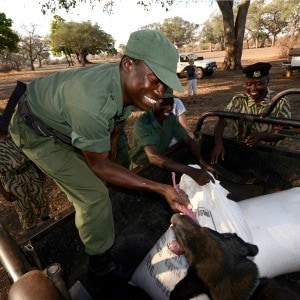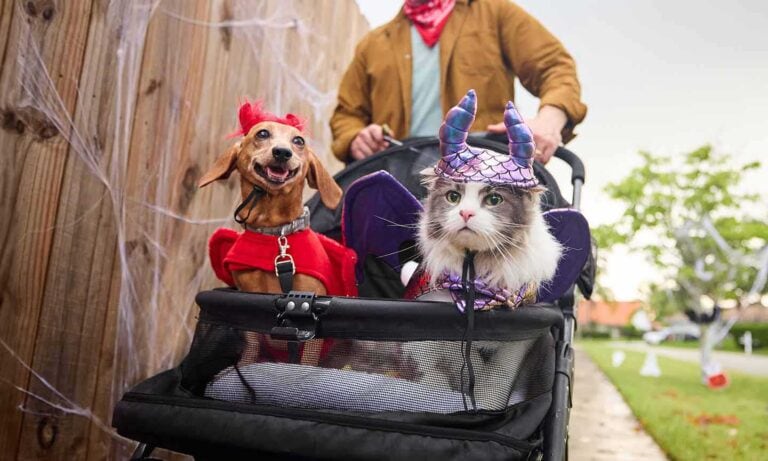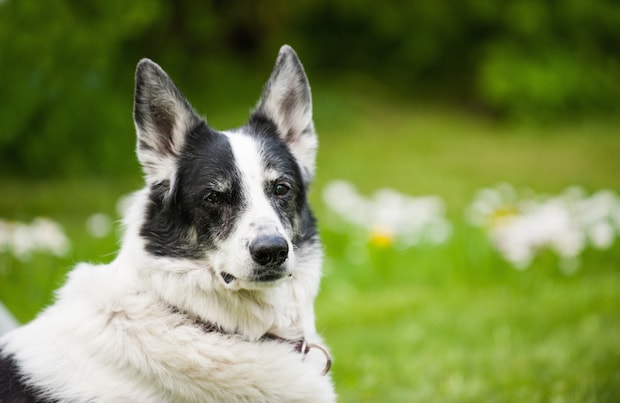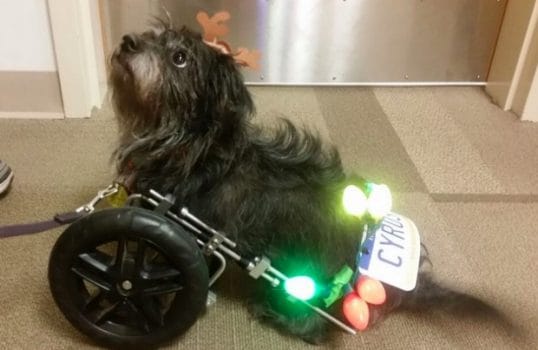Ten years ago, Aimee Hurt walked into an animal shelter in Anaconda, Montana, a small town west of Bozeman. When she took an interest in a young Lab-Shepherd mix named Wicket, the staff told her she didn’t want that dog because Wicket was “crazy.” After playing with Wicket for a few moments and watching her become captivated by a tennis ball, Hurt decided Wicket was the right kind of crazy.
Hurt is a wildlife biologist who has spent much of her career studying carnivores like bears and mountain lions. It’s often difficult work because these animals are solitary and have large ranges, making them hard to track. That’s where Wicket comes in. Humans have been putting dogs’ incredible sense of smell—they have a couple hundred million odor-detecting olfactory receptors, compared to our measly five million—to use for about as long as we’ve had dogs. They sniff out game for hunters, track drugs and bombs for law enforcement and help first responders with search-and-rescue missions. Hurt and a few other biologists who work with elusive animals figured dogs could also help them with their research, using their noses to track wildlife. In 2000, they founded Working Dogs for Conservation (WD4C), a nonprofit that brings detection-dog services to the aid of biologists and conservation scientists.

Over the last 16 years, WD4C has worked on five continents, and have expanded their work from finding and monitoring animals to addressing threats to those animals. “Now the dogs will find everything from invasive species to guns and ammunition and other things that affect wild ecosystems and wildlife,” says Pete Coppolillo, WD4C’s executive director.
What qualifies a dog to track grizzly bears or guns used by poachers? It’s not just a good nose that WD4C looks for. A conservation detection dog also needs a high “toy drive” like the kind that Wicket displayed with the tennis ball.
“These are the dogs that flip the stick at you 50 times, and if you take the stick way they find a rock and they flip that at you, and if you take the rock away they’ll find a leaf or whatever,” says Coppolillo. “They’re just crazed and driven and want to do it over and over and over again. These are dogs that often too much dog for a family and they end up in the shelters.” And that’s where WD4C finds they’re furry research assistants, giving rescue dogs new lives and a job that’s suited to their personalities. The group has also partnered with the International Fund for Animal Welfare to create Rescues 2the Rescue, a program that helps animal shelters evaluate dogs for conservation detection work and connect them with people and groups who can adopt them and give them a new home and career.
These days the demand for conservation detection dogs is more than the group can keep up with, so instead of sending their dogs and their handlers out on every project, they’ve started training others to do what they do. “We still do some of the field work ourselves—Aimee Hurt has done 8 months in the field this year,” Coppolillo says. “But we also acquire dogs and do their base training here in Montana—basically teach them how to be a detection dog—and then we help that dog transition to where it’s going to work with it new handlers, and we train the handlers how to work with the dog and train it on new scents. We’ve got dogs in Canada, Kyrgyzstan, Malawi and Zambia, and later this year we’ll do Tanzania.” Between WD4C’s team of nine dogs and the other dogs they’re training, the group is currently involved in 20 different projects.
WD4C dogs have gathered data on grizzly and black bears, mountain lions and wolves in Idaho and Montana that helped save critical habitat, detected wood infested with emerald ash borers (invasive beetles that have killed millions of trees in the US) and helped contain their spread in Minnesota and sniffed out San Joaquin kit fox poop in California so that fox habitat can be protected from development. The most gratifying work, though, has been the group’s partnership with scientists and law enforcement officials in Africa, says Coppolillo.

“The impact the dogs are having is extraordinary,” he says. “In the projects we support, we’ve found and seized over 50 guns used for poaching.” Given the immense scale of the poaching crisis, that might not seem like a big victory, but because these guns are hard to get, they’re often used by multiple poachers. “One poacher will use a gun to go out and hunt himself, but he’ll also loan it to other poachers for a share of their take,” Coppolillo says. “So, if you take one gun out of circulation, you may make that gun unavailable to seven, eight, maybe ten poachers.”
In his first week in the field, Ruger—a dog trained by WD4C and now working with conservationists and the Department of National Parks & Wildlife in Zambia—has searched out and seized 13 different guns. “He may have put 150 poachers out of business,” Coppolillo says. “That’s really powerful. It’s not only catching poachers after they’ve killed but preventing them from poaching in the first place.”
Images courtesy WD4C
Matt Soniak
Share:









